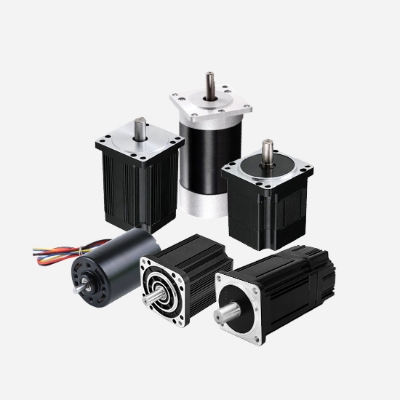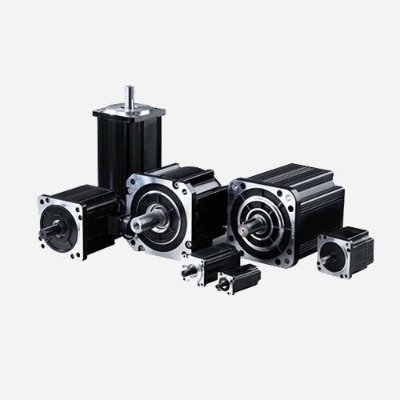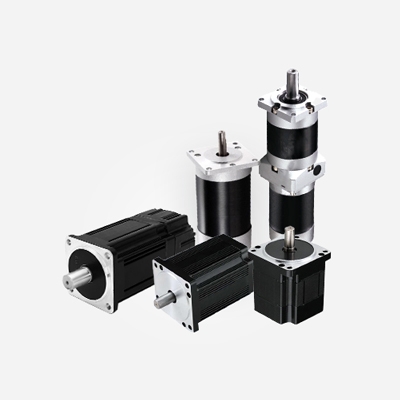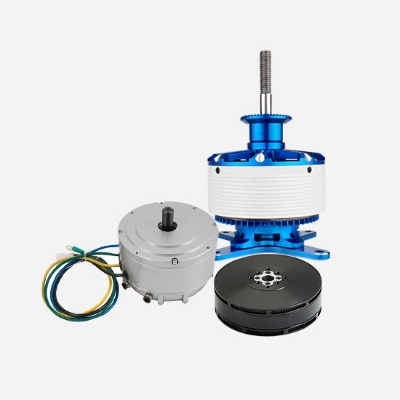-
You have no items in your shopping cart.
- Register
- Log in
- Wishlist
- Shopping cart
FAQ

How to Brake the Brushless DC Motor?
Brushless DC motor braking is usually using the motor itself for fast braking there are two simple ways, one is energy braking, and one is short-circuit braking. Energy braking is to consume the kinetic energy of the motor on the external braking resistor, and short-circuit braking is to consume the kinetic energy of the motor on the stator winding of the motor. Obviously, energy braking is more beneficial to reduce the heat of the motor. However, short-circuit braking does not require any hardware changes, so it is simple and convenient.
Short-circuit braking means that the upper (or lower) bridge arm of the motor's driver MOS tube is fully on and the lower (or upper) bridge arm is off when the brakes are applied, while the motor's three-phase stator windings are all shorted. The brushless dc motor in the power generation state is equivalent to the power supply being short-circuited. Because the resistance of the winding is relatively small, it can generate a large short-circuit current, and the kinetic energy of the motor is quickly released, which makes the motor instantaneously produce a great braking torque, and can achieve the effect of fast braking. The higher the motor speed, the higher the short-circuit current and the higher the braking force. However, it must be considered not to exceed the capacity of the MOS tube, so generally wait until the motor speed is reduced to a certain level before using short-circuit braking.
Outrunner vs. Inrunner Brushless Motor: What are the Differences?
- Structure: The output shaft of the brushless outrunner motor is connected to the propeller and a permanent magnet is placed on the outer rotor, which rotates on the external housing. On an inrunner motor, the rotor exists inside the stator. The magnet is placed on the rotor, which rotates, while the stator winding is fixed. In this case, the housing does not rotate and is fixed. The stator winding is placed on the inside of the housing.
- Torque: In general, brushless outrunner motors produce more torque than inrunner rotors. This is because the outrunner motor has a lower speed. The relationship between rotational speed and torque is inversely proportional. As the speed increases, the torque of the motor decreases. Therefore, an outrunner motor will usually produce more torque than an inrunner motor.
- Efficiency: In general, brushless inrunner motors are likely to be more efficient than brushless outrunner motors. The efficiency of the inrunner motor is relatively high due to its low inertia. Outrunner motors are relatively less efficient due to their high inertia.
How to Control the Forward and Reverse Rotation of the BLDC motor?

Usually, the forward and reverse rotation of the BLDC motor is realized by changing the logic relationship of the switch tube of the inverter to change the conduction sequence of each phase of the armature winding. In order to generate the maximum average electromagnetic torque in both forward and reverse rotation of the motor to ensure symmetrical operation, it is necessary to design the mutual positional relationship between the rotor position sensor, the main magnetic pole of the rotor and each phase winding of the stator, as well as the correct logical relationship.
The running direction of the motor can be controlled by controlling the on and off of the terminal "DIR" and the terminal "COM". The terminal "DIR" is internally pulled up to +12 with a resistor, which can be used with passive contact switches, or with control units such as PLCs with open collectors. When "DIR" and terminal "COM" are not connected, the motor runs clockwise (facing the motor shaft), otherwise, it runs counterclockwise. In order to avoid the damage of the brushless DC controller, when changing the direction of the motor, the motor should be stopped first before changing the direction.
Why Brushless DC Motor Needs a Controller?
The BLDC motor is a permanent magnet brushless synchronous motor. Its performance parameters, model, power supply voltage, output power, phase angle, presence or absence, photoelectric switch, or self-recognition function must be used in conjunction with the brushless DC motor controller. If you purchased a 48V BLDC motor, a matching 48V brushless motor controller is recommended.
And brushless DC motors do not have brushes and commutators, so to maintain the direction of rotation, an electronic commutator is required. The electronic commutator is controlled by the driver, and the brushless motor controller can also control the start and stop of the motor, forward and reverse rotation, speed, overvoltage, overcurrent, and under voltage protection. If there is no brushless DC motor controller, it will not work to directly power the DC brushless motor.
What are the Ways to Regulate the Voltage of Brushless DC motor?
Proper pressure can increase the efficiency of the brushless motor so that it can function better during use.
- When controlling a brushless motor, an inverter circuit is usually used. Furthermore, the current value can be adjusted by changing the additional voltage through the inverter circuit. PWM is a method of changing the voltage by adjusting the length of the on-off time of the pulse, and its important role is to adjust the ratio of the on-off time. If ON is relatively high, the same effect as increasing the voltage can be obtained. If the conduction rate is reduced, it will have the same effect as the voltage reduction.
- At present, there are microcomputers equipped with special hardware to realize PWM. In sine wave control, the voltage of three phases needs to be controlled, so the software is slightly more complicated than the 120-degree power-on control with only two phases. The inverter is a necessary circuit to drive a brushless motor, changing the on-time over a period of time to change the RMS value of the voltage, also commonly used in AC motors as well. As the turn-on time of the relationship between the PWM output and the output voltage increases, the RMS value is closer to the applied voltage turn-on.
DC brushless Geared Motor Overload, How to Do?
Causes
- Caused by the dragged mechanical equipment. Such as drainage and irrigation machinery waterway blockage, the machine shaft is not the same center, causing DC brushless geared motor overload, and even blocking.
- Caused by the motor itself due to poor working conditions. Such as poor ventilation, the ambient temperature is too high, the motor mechanical part of the failure caused by the motor overheating, insulation level is reduced, or even short circuit.
- Due to poor quality of the power supply grid, such as low voltage, three-phase imbalance and other reasons caused by the DC brushless geared motor current increase.
Solution
- Check the installation of relevant accessories. Do a good job of ventilation of the motor. Check whether the voltage of the environment is in line with the current.
- When running the DC brushless geared motor, to observe the operation of the motor. Once found overload immediately stop the operation of the motor, timely ventilation and check the accessories, so that you can prevent overload operation.
How to Control the Speed of Brushless DC motor?

Changing the resistance of the circuit for speed control
All kinds of brushless DC motors can be speed controlled by changing the resistance of the armature circuit. When the load is certain, the total resistance of the armature circuit increases with the increase of the external resistance in series, and the speed of the motor will be reduced. Changing the external resistance can be done with a contactor or a master switch.
Changing the voltage of the circuit for speed control
Continuously changing the operating voltage of the brushless motor power supply system can make the DC brushless motor in a wide range of infinitely variable speed. There are two ways to change the operating voltage of the brushless motor power supply system, one is the choice of generator set power supply system speed control system, the other is the choice of thyristor converter power supply speed control system.
Changing the current of the circuit for speed control
When the operating voltage of brushless motor is certain, even if the current of DC brushless motor is changed, the speed can be changed.
Why does the Brushless DC Motor Not Start?
Lack of Power
Possible situations: For example, the power switch is not closed, the fuse of the front stage is blown, the fuse of the main circuit or control circuit of the motor is blown, the power control devices such as contactors are out of order, and the line wires are broken or loose. The solution is to start with the front-end fuse, and gradually check the wires and devices of the main circuit and control circuit of the motor, find out the cause and repair it.
Motor Failure
Possible situations: bad contact between the brush and the commutator due to serious wear, jamming, insufficient spring pressure, etc.; the armature winding is disconnected; the excitation winding is disconnected and there is no residual magnetism, etc. The treatment method is to disconnect the power supply, and use the resistance gear of the multimeter to check the contact resistance between the brush and the commutator, and the resistance at both ends of each winding. If the resistance value is very large, it means that the fault exists, and then make further inspection to find the breakpoint and repair it.
Mechanical Failure
The mechanical equipment or transmission mechanism of the brushless dc motor is stuck, and the starting load is too heavy. At this time, the power supply should be cut off quickly and the mechanical fault should be found.
How to Calculate Brushless DC Motor Torque?
When you are looking for a brushless DC motor, if you don't know how much power or torque to choose, on the one hand, you can communicate with our technicians and ask for help in your selection. On the other hand, it can also be calculated by the torque formula.
The brushless motor is mainly used to generate driving torque. As a power source for electrical appliances or various machinery, its main function is to convert mechanical energy into electrical energy. Under the action of the torque, the mechanical equipment installed with the brushless motor will change the position or angle of the object. Therefore, the torque can be calculated according to the definition formula. That is, T=P*9.8/N, or the mutual conversion factor can also be like this: T*N/9.8=P.
For example, when the power of the brushless DC motor we choose is 1000W, and the number of revolutions of the motor is 3000 rpm, there will be 1000W*9.8/3000rpm=3.27Nm. Or know the torque T of the brushless motor, when the power is required , then it can be like this: 3.27Nm *3000rpm/9.8≈1000W. This is the formula for calculating the torque of the DC brushless motor. Different types of motor torque have different calculation formulas, such as the torque calculation formula of ordinary asynchronous motor T=9550*P/N.
In the formula:
P—power, kW;
N—the rated speed of the motor, r/min;
T—torque, Nm.




